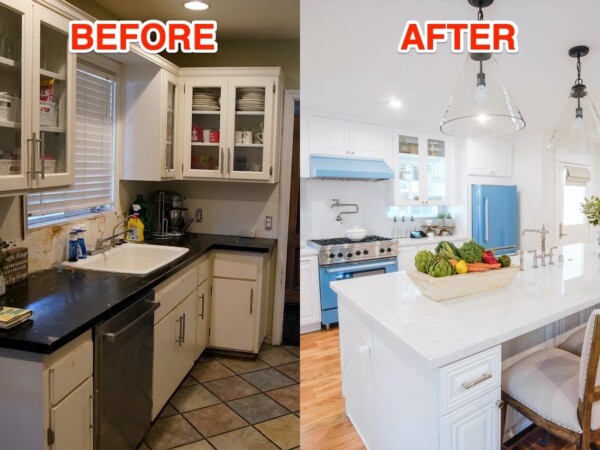
Should I Repair Or Replace My Leaning Fence? (Here’s What I Learned From Fixing Mine)
I noticed it slowly at first — one fence post in my backyard starting to lean ever so slightly. I ignored it (like most homeowners probably do), thinking it was just the ground shifting a bit or maybe the wind had knocked it loose. But over the next few weeks, it got worse. That slight lean turned into a major tilt, and by the time the gate started dragging and refusing to latch, I realized I had to do something.
The big question was: Do I repair it, or just replace it entirely?
If you’re staring out at a fence that’s leaning like it had one too many drinks, you’re probably asking yourself the same thing. Let me walk you through what I learned the hard way, what made me choose to repair instead of replace — and how I did it without breaking the bank.
👉 Want to skip to the method that saved me hundreds? Here’s how I fixed my leaning fence without replacing it.
What Causes a Fence to Start Leaning in the First Place?
Understanding why your fence is leaning is key to deciding whether to repair or replace. Here are the most common causes I found:
1. Rotting Fence Posts
This was my issue. The bottom of the post had absorbed years of moisture and started to rot at the base. Even though the top looked fine, it was soft and unstable underground.
2. Shifting or Eroding Soil
Rain, melting snow, or bad drainage can cause soil to soften or move — especially around fence posts. That creates gaps and pressure that cause the post to lean.
3. Loose or Broken Concrete Footings
If your posts are set in concrete and that concrete cracks or lifts, the whole post can tilt.
4. Wind Damage
Strong windstorms can push on panels and posts, especially if the fence acts like a giant sail with no gaps for wind to pass through.
5. Improper Installation
If your fence wasn’t set deep enough or wasn’t anchored properly from the beginning, it may have been destined to lean from day one.
When to Repair a Leaning Fence
You don’t always need a full replacement. In many cases, repairing the lean is not only easier — it’s smarter and way more affordable.
✅ Repair Your Fence If:
- The wood is still in good shape (no major rot or splitting)
- The lean is coming from loose soil, not a snapped post
- You can still push the post back into place
- The concrete footing is intact or repairable
- Only one or two posts are affected
That was my situation. One post had loosened at the base and started dragging the whole panel with it. Everything else? Still solid. No need to tear it all out.
Instead of spending hundreds replacing the post and panel, I went with a method that let me reset the post, reinforce it, and make the whole thing stronger than before.
Check it out here 👉 🛠️ My step-by-step guide to fixing a leaning fence.
When to Replace a Leaning Fence
Sometimes, a repair just isn’t worth it. Here’s when you’re better off starting fresh:
❌ Replace Your Fence If:
- The posts are rotted through
- The panels are warped or broken
- More than 3-4 sections are affected
- The fence is 10+ years old and showing signs of aging everywhere
- The post base is snapped off below ground level
If your fence is clearly past its prime and fixing one post won’t save it, it’s probably time to budget for a full replacement.
The Cost Difference: Repair vs. Replace
When I priced out both options, the numbers spoke for themselves:
- Replacing one post + panel: $150–$300+ (materials + labor)
- Full fence replacement: $1,500 to $4,000 (depending on size and material)
- DIY repair method I used: under $50 (just needed gravel, concrete, screws, and a bracket)
It wasn’t just about money — it was about time and effort too. Replacing the fence meant tearing out the old one, hauling it away, measuring everything, buying new panels… and losing my weekend.
Repairing the lean? Took me a few hours and gave me back my peace of mind.
How I Repaired My Leaning Fence (And Made It Stronger)
Here’s the simplified version of the method I used:
- Dug around the leaning post to expose the base
- Lifted and pushed the post back to level
- Braced it with temporary supports
- Poured fresh gravel and quick-set concrete around the base
- Added metal post brackets to anchor it even tighter
- Let it cure for 24 hours — and that was it
It hasn’t budged since. Full details, product links, and setup photos are here 👉 📏 Fix your leaning fence without replacing it.
How to Know If the Post Itself Is the Problem
Before you start digging or buying supplies, check the post itself. Here’s a quick trick I used:
- Grab the post with both hands and wiggle it hard
- If it flexes at the base but the wood is still firm, it’s worth saving
- If it splinters, creaks, or feels spongey, it’s probably rotted
- If it cracks or has termites or mold, you’re better off replacing it
Can You Fix a Leaning Fence Without Digging?
In some cases, yes.
There are post repair brackets and anchor systems that let you straighten a leaning fence without removing or digging out the post. These are especially helpful when the concrete footing is still intact.
But I’ll say this — if you want a long-lasting fix, re-setting the base with new gravel and concrete is the most dependable method.
Tips to Prevent Future Leaning
After fixing mine, I made a few changes to keep it from happening again:
- Improved drainage: I sloped the soil away from the posts so water wouldn’t pool
- Used fast-setting concrete for a tighter hold
- Added gravel under each post for better stability
- Checked for shifting soil after heavy rains
- Installed metal post anchors on the worst-weather side of the fence
These small steps added years to the life of my fence — no more leaning, no more sagging.
Can You Fix a Leaning Fence Alone?
Yes — I did mine solo. But having a second person definitely helps when it comes to pushing the post back into place or holding braces while you set concrete.
If you’re working alone:
- Use 2×4 braces to temporarily hold the post upright
- Take your time when leveling and re-check your alignment
- Don’t rush the concrete cure time — give it at least 24 hours
What Type of Concrete Works Best for Fence Repairs?
I used Quikrete Fast Setting Concrete Mix — it sets in about 20–40 minutes and is perfect for smaller backyard jobs like this. Just add water, mix in a bucket or directly in the hole, and let it cure.
Some people recommend expanding foam post mix, but I personally prefer concrete for peace of mind and durability.
Repair First, Replace Only If You Have To
If I’d called a contractor right away, I probably would’ve been told to replace the whole section. But by taking a little time to assess the situation and do it myself, I ended up saving money, keeping my existing fence, and actually making it stronger than it was before.
If your fence is just leaning — not rotting, broken, or falling apart — then you absolutely can fix it.
Check out the exact method I used right here 👉 🔨 Fix your leaning fence without replacing it
As an Amazon Associate we earn from qualifying purchases through some links in our articles.



